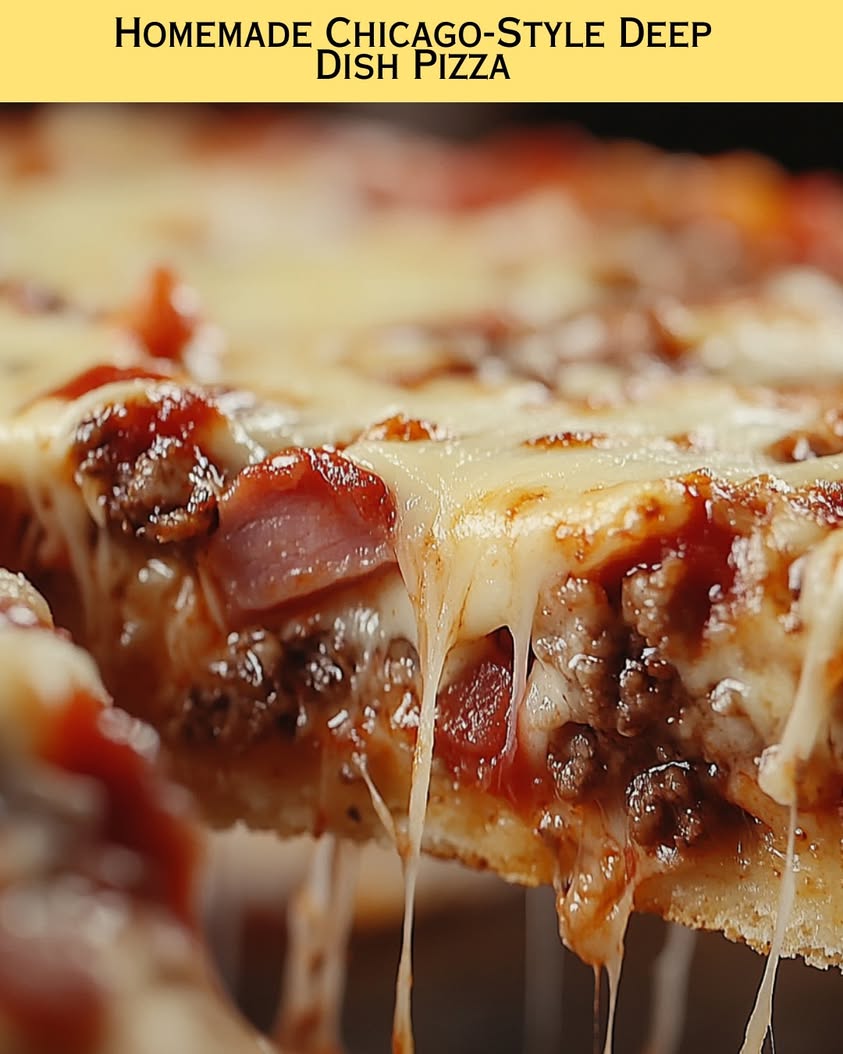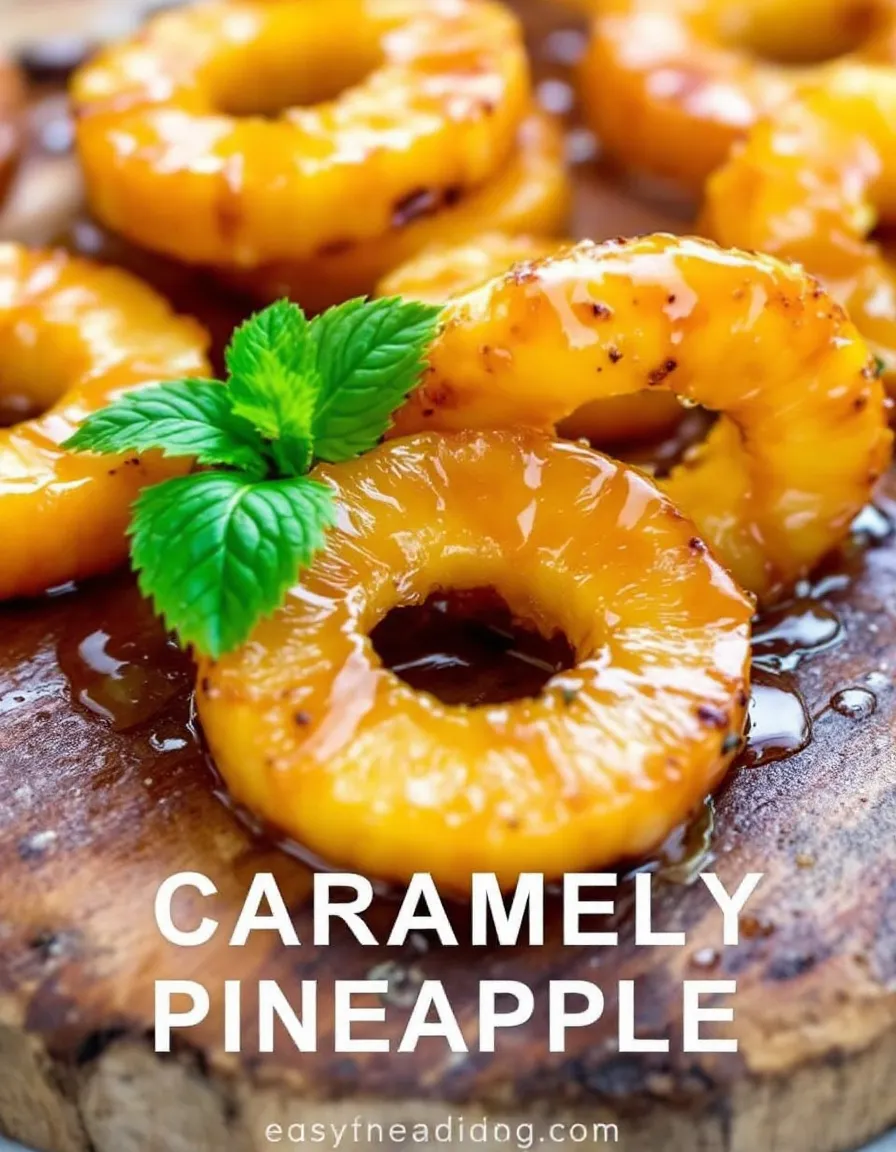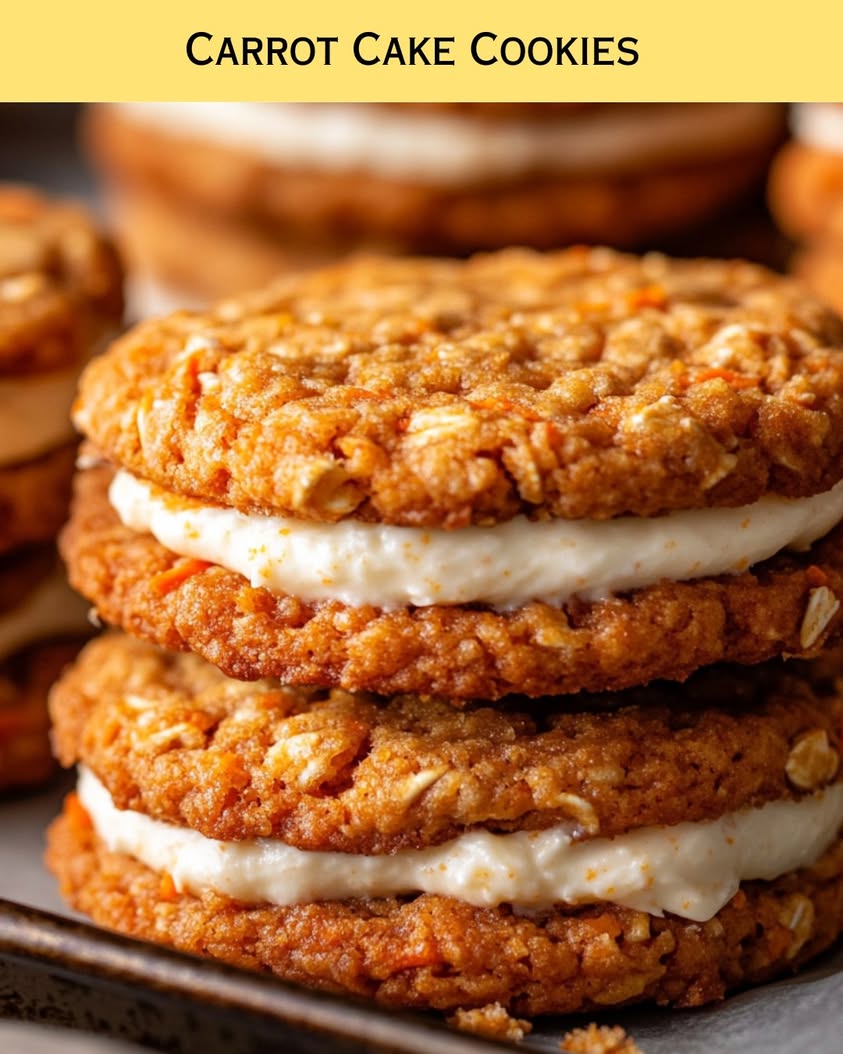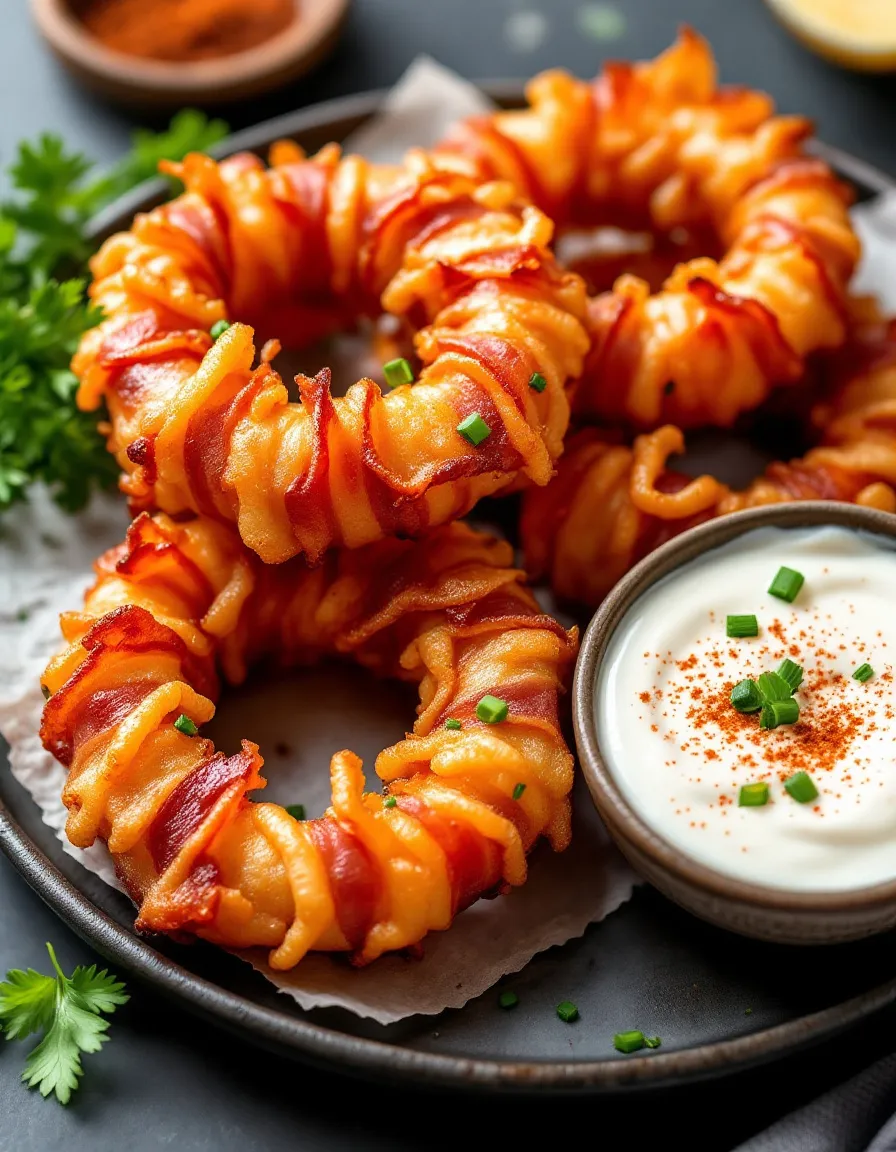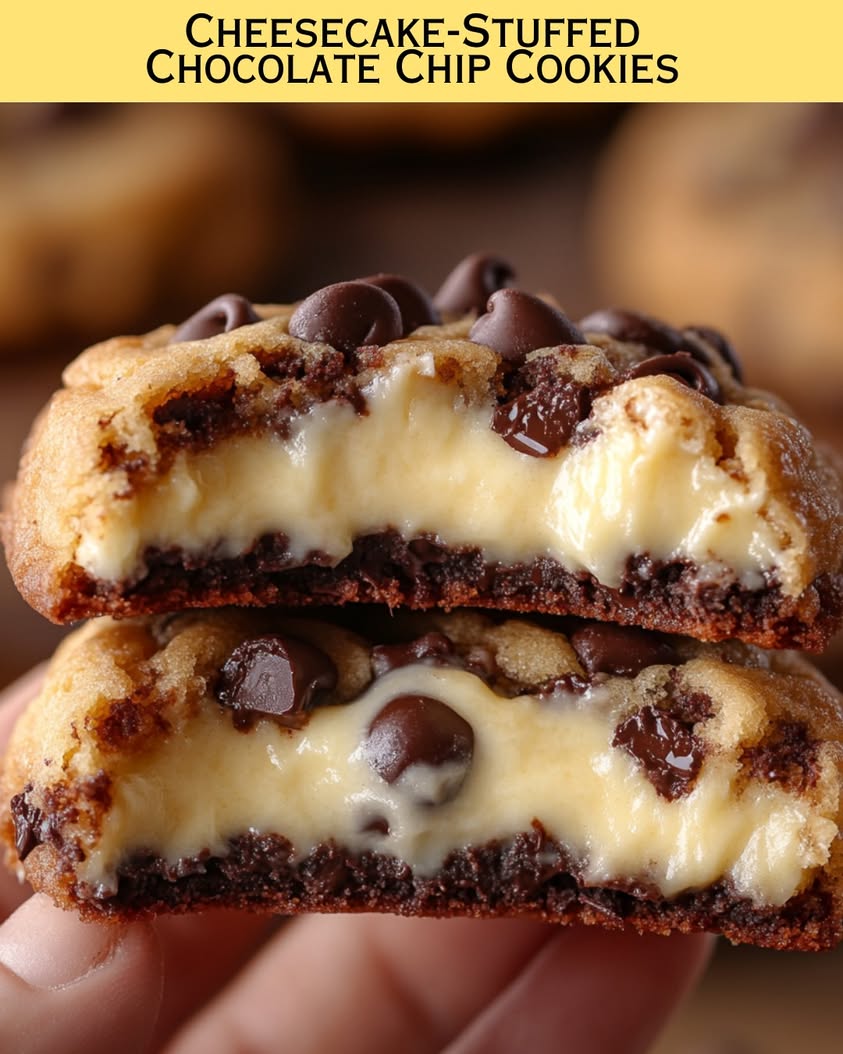Homemade Chicago-Style Deep Dish Pizza: The Ultimate Comfort Food
If you crave a pizza that delivers on both taste and heartiness, nothing beats a Homemade Chicago-Style Deep Dish Pizza. Known for its thick crust, which cradles a generous amount of gooey cheese, savory sauce, and your choice of toppings, this pizza is a meal that warms your heart and satisfies your hunger. The combination of flavors melds beautifully, with the sweetness of tomatoes and the richness of cheese creating a symphony for your taste buds that’s hard to resist.
The allure of this iconic dish lies not just in its flavors but in the sheer experience of making it. Imagining the aroma of fresh dough baking in the oven mingling with the scent of bubbling cheese is enough to conjure up feelings of nostalgia. Gather your loved ones for this cooking adventure, transforming your kitchen into a lively pizzeria where everyone can participate or customize their slices. Your Homemade Chicago-Style Deep Dish Pizza is not just about the food; it’s about the memories created around the table.
Quick Recipe Highlights
- Flavor Profile: Rich tomato sauce meets gooey mozzarella and your favorite toppings, creating an unforgettable taste experience.
- Texture: The crust is thick and buttery, offering a satisfying bite, while the cheese is melty and stretches perfectly with each slice.
- Aroma: Fresh, bready notes will fill your kitchen, accompanied by the earthy scent of herbs and spices during baking.
- Visual Appeal: A beautifully golden-brown crust towers over colorful toppings, making every slice a visual delight.
- Skill Level Needed: While it requires some technique, anyone can master Chicago-style deep dish with practice and patience.
- Special Equipment: A deep-dish pizza pan will help achieve the authentic crust thickness characteristic of Chicago-style pizza.
Recipe Overview
- Difficulty Level: This recipe is rated as moderate due to the dough preparation and assembly required, but it can be tackled by home cooks eager for a challenge.
- Category: This dish falls under dinner or comfort food, perfect for family gatherings or indulgent nights in.
- Cuisine: Chicago-style deep dish pizza is a staple of American cuisine, showcasing regional pride and the influence of Italian immigrants.
- Cost: The ingredients are generally affordable, making this a cost-effective meal that still feels luxurious.
- Season: Enjoy this hearty pizza year-round, but it shines brightly during colder months when comfort foods are particularly favored.
- Occasion: Ideal for casual gatherings, pizza nights, or even game days when you want to impress your friends.
Why You’ll Love This Recipe
This Homemade Chicago-Style Deep Dish Pizza has something for everyone! The blend of flavors and textures creates a pizza that’s more than just a meal; it’s an experience. Each slice introduces a delightful mix of savory sauce, melty cheese, and perfectly cooked toppings, making every bite a taste sensation.
Not only is this pizza a feast for your taste buds, but it’s also super convenient to prepare. With a little planning, the dough can be made ahead of time, leaving you with more opportunities to enjoy the company of friends and family. You can also customize the toppings based on your preferences, whether you’re craving classic pepperoni or an array of veggies.
This pizza is surprisingly nutritious too! Whole-wheat flour can be substituted for all-purpose flour in the dough for added fiber, and you have control over the toppings. Load it up with fresh vegetables, use low-fat cheese, or even add lean meats to boost protein content.
The Homemade Chicago-Style Deep Dish Pizza is perfect for entertaining. Its impressive size will make it the star of any gathering, and it invites everyone to dig in and share. The fun of customizing slices means that everyone leaves satisfied, creating the ultimate communal dining experience.
Finally, the cost-effectiveness of this pizza can’t be overstated. Homemade pizzas not only save money compared to takeout but also allow you to control ingredient quality, ensuring you get the best meal for your budget.
Historical Background and Cultural Significance
The origins of Chicago-style deep dish pizza can be traced back to the 1940s when Pizzeria Uno opened its doors, introducing a revolutionary take on traditional Italian pizza. The thicker crust structure was a game-changer, allowing for a hearty filling that distinguished it from its New York counterpart. This innovation was not just about creating more food; it was about crafting a new culinary identity for Chicago.
Over time, Chicago-style pizza has gained cultural significance, becoming synonymous with the city itself. It reflects the melting pot of flavors and influences that characterize the vibrant culinary scene in Chicago. Families often have their favorite pizzerias, and deep dish pizza has become a staple for celebrations and gatherings, embodying camaraderie and sharing.
The evolution of this pizza has seen variations such as stuffed deep-dish and pan pizza, which offer further exploration into flavor and presentation. Each iteration tells the story of a city that embraces its gastronomic heritage while encouraging creativity in the kitchen.
Regional variations, like the use of different cheeses or unique toppings, showcase how local tastes shape this beloved dish. Chicago-style deep dish continues to evolve, highlighting the city’s diverse culinary landscape while remaining a cherished staple.
Ingredient Deep Dive
- Flour: The base of any good pizza starts with quality flour. Traditionally, all-purpose flour is used, but many opt for bread flour for its higher protein content, resulting in a chewier crust. When selecting flour, look for finely milled options that can support crust formation. Store flour in a cool, dark place to preserve its freshness, and consider bulk purchases for economical cooking. If you’re looking to reduce gluten intake, there are gluten-free blends available that can work well.
- Cheese: Mozzarella is the classic choice for Chicago-style deep dish, offering a stretchy, melty characteristic that’s hallmark to the pizza. Opt for fresh mozzarella for a creamier texture, or a combination of mozzarella and provolone for added flavor depth. Ensure it’s kept refrigerated and consumed by its expiration date. If seeking alternatives, vegan cheese options can provide a similar melt once heated.
Common Mistakes to Avoid
- Using too much flour: This can lead to a dry dough that doesn’t rise properly. Measure carefully and avoid adding extra flour unless absolutely necessary.
- Over-kneading the dough: While you want to develop gluten, over-kneading can make the crust tough and chewy instead of tender.
- Not letting the dough rest: Allowing the dough to rest is crucial for achieving a tender crust. Skipping this step can lead to a dense pizza.
- Using cold ingredients: Cold cheese and sauce can affect how the pizza cooks. Use room-temperature ingredients for even cooking.
- Too much sauce: A heaping amount of sauce can make the pizza soggy. Use a reasonable amount to maintain a proper balance.
- Overfilling the pizza: While it can be tempting to pile on the toppings, this can lead to uneven cooking and a mess in the oven.
- Picking the wrong pan: Ensure you’re using a deep-dish pan; a regular pizza pan will not give you the same thickness and texture.
- Skipping preheating: On a busy day, it’s easy to forget, but preheating your oven ensures your pizza will cook evenly and create a perfect crust.
- Not checking for doneness: Trust your intuition. A delicious looking pizza can be deceiving, and the only way to know is to test for doneness.
Essential Techniques
Dough Making: This is the foundation of your pizza. The key to mastering the dough is finding the right balance of liquids and dry ingredients. A well-mixed dough should be slightly sticky but not tacky. Visual cues for success include a smooth surface and elasticity when stretched. Remember not to rush; allow it to rest properly for the best texture.
Layering the Ingredients: Proper layering is essential in creating the ideal deep-dish pizza. Start with a layer of cheese to avoid a soggy crust, then add toppings, and finish with sauce. This order helps keep the crust crisp while locking in flavors. Ensure even distribution of ingredients for consistent cooking, and watch the bake time closely to avoid overcooking.
Pro Tips for Perfect Homemade Chicago-Style Deep Dish Pizza
1. Use weighed measurements for precise results in your dough consistency, ensuring ideal texture.
2. Allow your dough to rise in a warm environment to enhance flavor and texture.
3. Don’t rush the oven preheat; this step is crucial for creating that crispy crust.
4. Par-bake your crust slightly before adding toppings to further ensure it stays crisp.
5. Experiment and find your favorite sauce recipe; a fresh sauce can elevate the final dish.
6. If using fresh vegetables, consider pre-cooking them to prevent excess moisture.
7. Let the pizza rest briefly before slicing; this allows the cheese to set for cleaner slices.
8. Embrace creativity; try non-traditional toppings like BBQ chicken or artichokes for unique flavor profiles.
Variations and Adaptations
Homemade Chicago-Style Deep Dish Pizza can adapt beautifully to seasonal ingredients. During the summer, top your pizza with fresh tomatoes and basil for a garden-inspired delight. In winter, hearty ingredients like roasted squash or caramelized onions can bring warmth and comfort.
Additionally, consider dietary accommodations. For a gluten-free version, utilize a gluten-free pizza flour blend and ensure your toppings are also gluten-free. For a lighter twist, try using a cauliflower crust that adds nutrients while decreasing the carb load.
If you’re feeling adventurous, try different sauces such as pesto or barbecue sauce to change up the flavor profile radically. There are endless possibilities when it comes to personalizing your pizza, from the crust to the toppings, leading to unique flavor experiences with every bake.
Serving and Presentation Guide
Serving your Homemade Chicago-Style Deep Dish Pizza can be as aesthetic as it is delicious. A sharp pizza cutter creates clean lines for stunning slices, and placing the pizza on wooden cutting boards enhances presentation. Garnish with fresh herbs or a drizzle of olive oil right before serving for added flair and freshness.
Consider accompanying the pizza with a side salad to balance the meal, and serve chilled beverages to complement the rich flavors. Offer a variety of dipping sauces such as garlic or marinara to elevate the experience further. For portion control, serve smaller slices as guests can always go back for more.
Depending on your audience, you can also create a custom pizza bar with toppings set out for guests to mix and match. This playful presentation encourages interaction and adds excitement to the dining experience.
Wine and Beverage Pairing
Pairing wine with your Homemade Chicago-Style Deep Dish Pizza is all about complementing the rich, hearty flavors. A classic option is a full-bodied red wine such as a Chianti or a Cabernet Sauvignon, which can stand up to the robust flavors.
For those preferring white wine, a chilled Sauvignon Blanc can also provide a refreshing contrast to the richness of the cheese. Non-alcoholic alternatives like sparkling water or house-made sodas offer a refreshing palate cleanser that balances flavors without overshadowing the food.
If coffee or tea is more to your liking, a strong espresso can cut through the richness of the pizza and provide a delightful way to end your meal. Remember, the key is to find beverages that highlight the deliciousness of your pizza rather than competing with it.
Storage and Shelf Life
Storing your Homemade Chicago-Style Deep Dish Pizza properly is crucial to preserving its taste and texture. Allow leftover pizza to cool completely, then wrap it tightly in plastic wrap or aluminum foil before placing it in the refrigerator. This helps retain moisture and prevents the crust from becoming rubbery.
Consume leftovers within 3-4 days for optimal freshness. When reheating, place slices in an oven at 350°F (175°C) for about 10-15 minutes to regain that delightful crispiness.
If you wish to freeze your pizza, cut it into slices and wrap each slice individually. Storing pizza in an airtight container or freezer-safe bag can prolong its shelf life up to 2 months. For best results, defrost in the refrigerator before reheating.
Make Ahead Strategies
Creating your Homemade Chicago-Style Deep Dish Pizza can be made easier with a little prep work. You can prepare the dough in advance and store it in the refrigerator for up to 24 hours. Allow the dough to come to room temperature before you roll it out for the best results.
If you’re short on time, consider prepping your toppings ahead as well. Chopping vegetables or preparing meats can save you valuable time on cooking day. Store prepped ingredients in airtight containers in the fridge.
Assembling the pizza can be done a few hours in advance if you prefer, just cover it tightly with plastic wrap and store it in the fridge until ready to bake. This not only enhances flavors but also allows you to whirlwind your pizza together when dinner time comes around.
Scaling Instructions
Scaling your Homemade Chicago-Style Deep Dish Pizza is simple and allows you to cater to any group size. For a smaller portion, you can halve the ingredients while maintaining the same cooking method.
If you’re doubling or tripling the recipe, consider investing in multiple deep-dish pans to ensure all pizzas cook evenly. Be mindful that cooking times may vary slightly depending on oven space and the number of pizzas being baked simultaneously.
Adjust cooking time if you are combining more than one pizza in a single oven, as crowding may lead to uneven cooking. Make sure to keep an eye on all your pizzas as they bake, and adjust the time as needed.
Nutritional Deep Dive
The nutritional composition of your Homemade Chicago-Style Deep Dish Pizza can vary significantly based on the ingredients used. Generally, a standard slice is rich in carbohydrates due to the crust. However, using whole-grain flour or incorporating vegetables into the crust can enhance fiber content, promoting digestive health.
Cheese adds calcium and protein but can also contribute to high saturated fat levels. Opting for lower-fat cheeses can balance nutritional needs while still satisfying cheese cravings. The choice of toppings can further influence the health profile, with options like lean meats, fresh vegetables, and herbs boosting vitamin content.
As you prepare your pizza, portion control is crucial for maintaining a balanced diet. Aim for one or two slices, complemented with a salad or vegetable side, to ensure a captivating yet nutritious meal.
Dietary Adaptations
For those seeking gluten-free options, using a gluten-free pizza flour blend or almond flour can create a satisfying crust without sacrificing flavor. Pair this with gluten-free toppings to maintain dietary restrictions.
Dairy-free versions can be conveniently made using high-quality almond or cashew cheese, which provides a creamy texture and satisfies those avoiding dairy. Vegan options include using plant-based sausages and loading up on veggies for protein and nutrition.
If opting for a low-carb or keto diet, consider alternative crusts made from cauliflower or cheese. Not only are these options delicious, but they significantly reduce carb intake.
The beauty of Homemade Chicago-Style Deep Dish Pizza lies in its adaptability—there’s a variation for everyone, ensuring everyone can enjoy a slice.
Troubleshooting Guide
Should you encounter issues while making your Homemade Chicago-Style Deep Dish Pizza, here are some solutions:
– **Texture issues:** If the crust turns out too dense, it may be over-kneaded. Remember to gently knead your dough to achieve the perfect balance.
– **Flavor balance:** If your pizza tastes bland, consider enhancing your sauce with fresh herbs or additional spices to boost flavor.
– **Temperature problems:** If your cheese isn’t melting well, check the oven temperature; it should be at least 425°F (218°C) for crispy results.
– **Equipment challenges:** If you lack a deep-dish pizza pan, a cast-iron skillet can be an excellent alternative, providing similar results.
– **Ingredient substitutions:** If you run out of an ingredient, don’t hesitate to get creative. Cheese types can be swapped based on availability, while veggies can be interchanged to match your preferences.
– **Timing concerns:** If the pizza is browning too quickly, cover the top loosely with foil to prevent over-cooking while the bottom bakes through to completion.
Recipe Success Stories
Our community loves sharing their experiences and adaptations of the Homemade Chicago-Style Deep Dish Pizza. Many have successfully experimented with unique toppings, like smoked Gouda or roasted garlic, showcasing individual tastes while maintaining the pizza’s core flavors.
Readers have also shared that hosting pizza-making parties has been a hit; the interactive aspect lets guests get involved, sparking creativity with toppings and combinations. Photography tips have also surfaced, with users recommending natural lighting and topping placements for that Instagram-worthy slice.
From simple adaptations to major flavor revamps, our readers have shown that this pizza is a canvas waiting for your culinary touch! Each story adds to the rich tapestry of culinary experiences echoing through kitchens worldwide.
Frequently Asked Questions
2. What type of cheese works best? Fresh mozzarella is traditional, but a mix of mozzarella and provolone enhances the flavor and stretch.
3. How can I make the crust flakier? Incorporate cold butter into the dough for flakiness or use a separate layer of ricotta as part of the filling.
4. Is it possible to make the dough a day ahead? Absolutely! Prepare and refrigerate the dough overnight for the best flavor and rise.
5. How long should I let the pizza rest before slicing? Allow your pizza to rest for about 5-10 minutes post-baking to help the cheese set for better slicing.
6. Can veggies be added to the crust? Yes! Add finely chopped veggies directly into the dough for added flavor and nutrition.
7. What if my pizza bottom is soggy? Consider pre-baking the crust or using less sauce to mitigate sogginess.
8. Are there any good vegan cheese options? Many brands now offer great dairy-free cheeses that melt well; look for cashew-based or soy-based products.
9. Can I use a regular pizza pan instead? While you can, a deep dish pan is recommended for achieving the signature thickness of this pizza.
10. What should I serve with my pizza? Pair your pizza with a fresh salad or garlic bread for a complete meal experience.
Additional Resources
Enhancing your culinary journey is simple with additional resources tailored to all your pizza-making needs. Explore related recipes like classic Margherita pizza or inventive flatbreads to expand your menu.
Check out detailed technique guides for mastering pizza-making basics, ensuring you have a comprehensive understanding of everything from dough to toppings. Knowing the ins and outs of different cheeses, sauces, and crusts can significantly elevate your homemade meals.
For those considering equipment recommendations, deep-dish pans, pizza stones, and peel boards are excellent investments for any home cook. Lastly, insight into seasonal variations allows you to adapt recipes based on what’s fresh—keeping your meals exciting and flavorful year-round.
Join the Conversation
We encourage you to join our vibrant community! Share your Homemade Chicago-Style Deep Dish Pizza creations on social media with your friends and followers. Use the opportunity to give photography tips or showcase your unique toppings.
Engage with fellow food enthusiasts by exchanging recipe reviews and discussing best practices. Whether it’s sharing a success story or finding a new twist on a classic, the conversation continues to grow, building a supportive network passionate about delicious cooking and communal dining!
The Recipe
Homemade Chicago-Style Deep Dish Pizza
Serves: 8
Prep Time: 30 mins
Cook Time: 60 mins
Total Time: 90 mins
Kitchen Equipment Needed
- Deep-dish pizza pan
- Mixing bowl
- Rolling pin
- Oven
- Pizza cutter
Ingredients
- 2 cups all-purpose flour
- 1/2 cup cornmeal
- 1 teaspoon salt
- 2 teaspoons sugar
- 1 packet active dry yeast
- 1 cup warm water (110°F)
- 1/4 cup olive oil
- 3 cups shredded mozzarella cheese
- 1 1/2 cups pizza sauce
- Your choice of toppings (pepperoni, vegetables, etc.)
Directions
- In a bowl, mix warm water and yeast. Let it sit for 5 minutes until foamy.
- In a separate bowl, combine flour, cornmeal, salt, and sugar.
- Mix the flour mixture into the yeast mixture, and knead until smooth.
- Cover the dough with a damp cloth, let rise in a warm place for 30 minutes.
- Preheat your oven to 425°F (218°C).
- Roll out the dough and press it into the deep-dish pan, covering the sides.
- Layer with cheese, toppings, and then spread sauce on top.
- Bake for 60 minutes or until the crust is golden brown.
- Allow to cool for 10 minutes before slicing and serving.
Recipe Notes
- For a crispier crust, consider par-baking the crust before adding toppings.
- Experiment with different cheeses or create a vegetarian version using various fresh vegetables.
